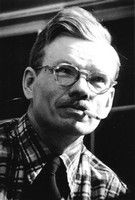Gallery Gazer
Corcoran Biennial Shows Preference for 'Invited' Rather Than 'Competitive' Art
The merits of the Corcoran's 23d biennial of contemporary American oil paintings will certainly be cited among the strongest arguments in favor of museum men over artists as jurors.
Furthermore, as this is one of the most stringently selected biennials from the competitive end, one wonders what the result will be for future concessions for totally invitational exhibitions.
Despite the success of other such shows--the Carnegie International for one--the word "invited" is just one of many "bones of contention" among American artists.
Considering comments I have read on chairman Roland McKinney's views of the competitive vs. invitational aspects of jurying, it is no surprise that this show is largely pro-invitational.
Out of the 226 works on view, 173 were invited and 42 selected (adding the paintings by the Corcoran faculty). The total submitted from 42 States and the District of Columbia was 890.
Slim chances for the submitting artists, indeed, and it will probably prejudice the minds of many on the merits of this show.
Including the Corcoran faculty, five other area artists were invited to participate in a manner as careful and discerning as the other invitees. A good representation of prominent local artists was asked to present works for this consideration.
The jury selected Samuel Bookatz, Robert Gates, Leonard Maurer, Alfred McAdams, and John Chapman Lewis. The rest were eligible for the regular competitive channels.
This biennial is all-inclusive. It has representational work of many divergencies: allegorical, romantically literative, minute naturalism, realism, and the increasingly popular magic realism.
It runs the gamut of impressionism, expressionism, cubism, satire, and all of the derivations, experimentalism, and various tangents of abstract non-objective art; representing (as most preceding biennials) a cross section of American painting during the past two years.
However, there has not been such a fascinating verve and vitality in a dozen years.
A word about trends. According to the jurors' statement they were "interested" to note that relatively few representational paintings were submitted, but they were able to accept a fair proportion of them. On the other hand, "a great many abstract works were rejected because they did not possess the desired quality."
The jury also adds that "it is significant that the abstract idiom seems to be as much misunderstood by many painters as it is by laymen." A situation somewhat reversed from what other big show juries have found. BUT--we hasten to add--not wholly contradictory!
What is really underlined in the statement and the selection is, 1, That there is value in all idioms; 2, That it is ruinous to try to anticipate the tastes of any jury. Have confidence in the best of one's personal efforts and the results will be more edifying to all concerned.
It is quality that counts--and with this in mind, the jury conscientiously cut across stylistic ratios.
As an invitational show, which is the only way it can be appraised, it is a commendable one. The diversity of approaches included have a unity of contemporaneous outlook and an excellent craft that demands attention.
The jurors knew what they wanted--a fact that is obvious in the absence of paintings or stylistic conceits.
As for these efforts representative of the avante garde idioms, some are frankly derivative. Yet we found them neither fragmentary or dull. As the installation proceeds from the avante garde along the approaches, in succession, to the realistic, we were delighted to find that the latter were free of overzealous sentimentality and self-consciousness. The increasingly popular "magic realism" is represented without the obvious and tired symbols of surrealism.
From an overall aspect, it seems that the Corcoran must make up its mind whether it wants an exclusively invitational show or not. Certainly it seems unfair to the artists who are invited, to compete for such few places.
Washington is ready for a national invitational--or even an international one.
Sidelights: Corcoran faculty members include Eugene Weisz, represented by a remarkably penetrating self-portrait; Kenneth Stubbs, again skillfully maneuvering motion and endless space in a sports study, and Omar Carrington, no longer the romanticist, but working confidently in a direction of psychological clarity and intensity. Artists with long national "reps" include Reginald Marsh, who shows a burlesque queen, the Soyers with their somber ladies, Waldo Pierce, Leon Kroll, Isabel Bishop, Eugene Speicher, etc. ... Jack Levine, William Gropper and Philip Evergood have social satires ... Stephan Greene is one of hte mystic realists ... Among the moderns, Adolph Gottleib and Robert Motherwell have the most austere abstractions ... There's also much that is new and fascinating.
Gladys Harrison, Washington Times Herald, March 22, 1953, page M5
|

